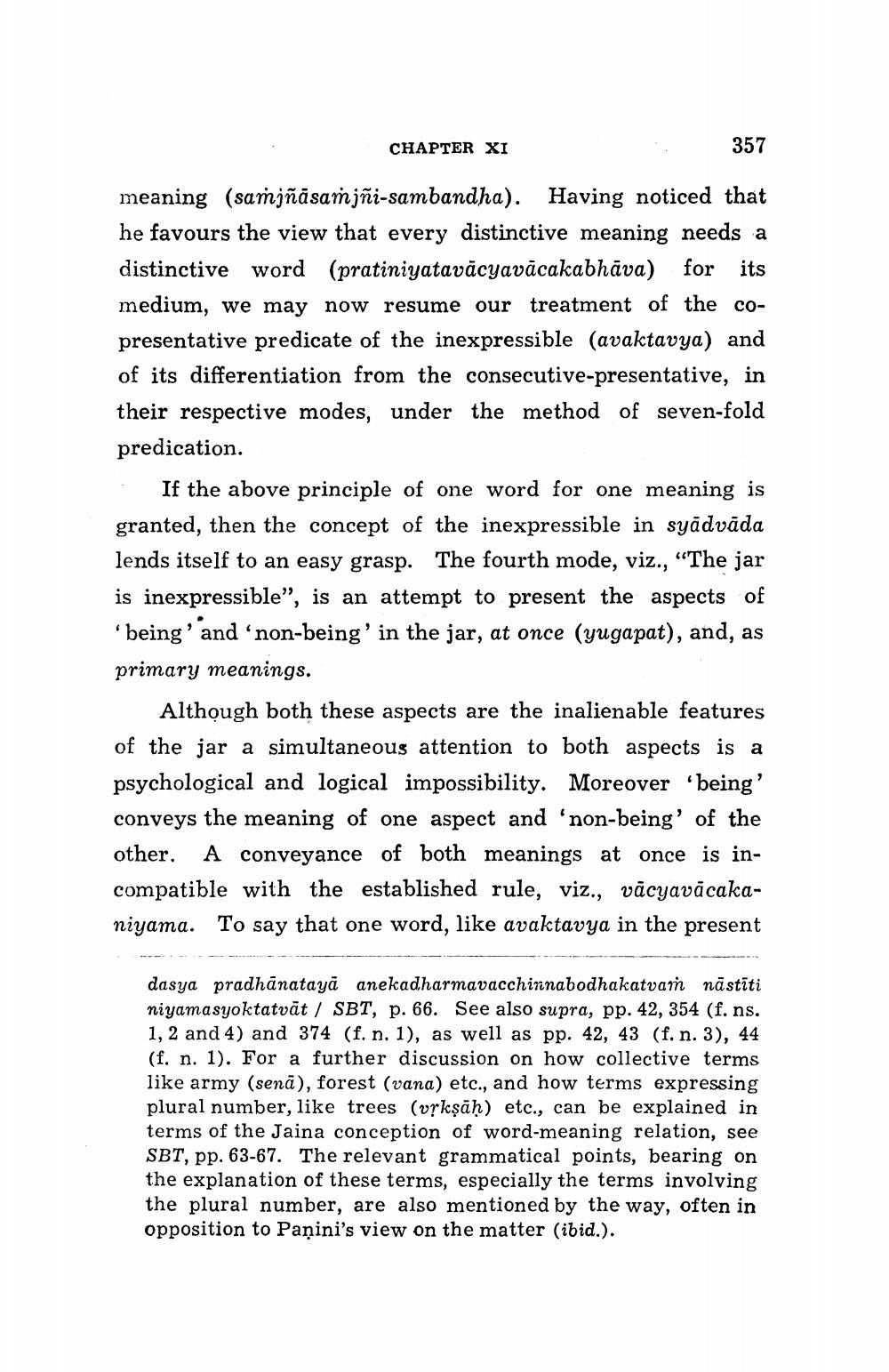________________
CHAPTER XI
357
meaning (samjñāsaṁjñi-sambandha). Having noticed that he favours the view that every distinctive meaning needs a distinctive word (pratiniyatavācyavācakabhāva) for its medium, we may now resume our treatment of the copresentative predicate of the inexpressible (avaktavya) and of its differentiation from the consecutive-presentative, in their respective modes, under the method of seven-fold predication.
If the above principle of one word for one meaning is granted, then the concept of the inexpressible in syādvāda lends itself to an easy grasp. The fourth mode, viz., "The jar is inexpressible", is an attempt to present the aspects of 'being' and 'non-being' in the jar, at once (yugapat), and, as primary meanings.
Although both these aspects are the inalienable features of the jar a simultaneous attention to both aspects is a psychological and logical impossibility. Moreover 'being' conveys the meaning of one aspect and 'non-being' of the other. A conveyance of both meanings at once is incompatible with the established rule, viz., vācyavācakaniyama. To say that one word, like avaktavya in the present
dasya pradhanataya anekadharmavacchinnabodhakatvam nāstīti niyamasyoktatvāt / SBT, p. 66. See also supra, pp. 42, 354 (f. ns. 1, 2 and 4) and 374 (f. n. 1), as well as pp. 42, 43 (f. n. 3), 44 (f. n. 1). For a further discussion on how collective terms like army (sena), forest (vana) etc., and how terms expressing plural number, like trees (vṛkṣaḥ) etc., can be explained in terms of the Jaina conception of word-meaning relation, see SBT, pp. 63-67. The relevant grammatical points, bearing on the explanation of these terms, especially the terms involving the plural number, are also mentioned by the way, often in opposition to Panini's view on the matter (ibid.).




